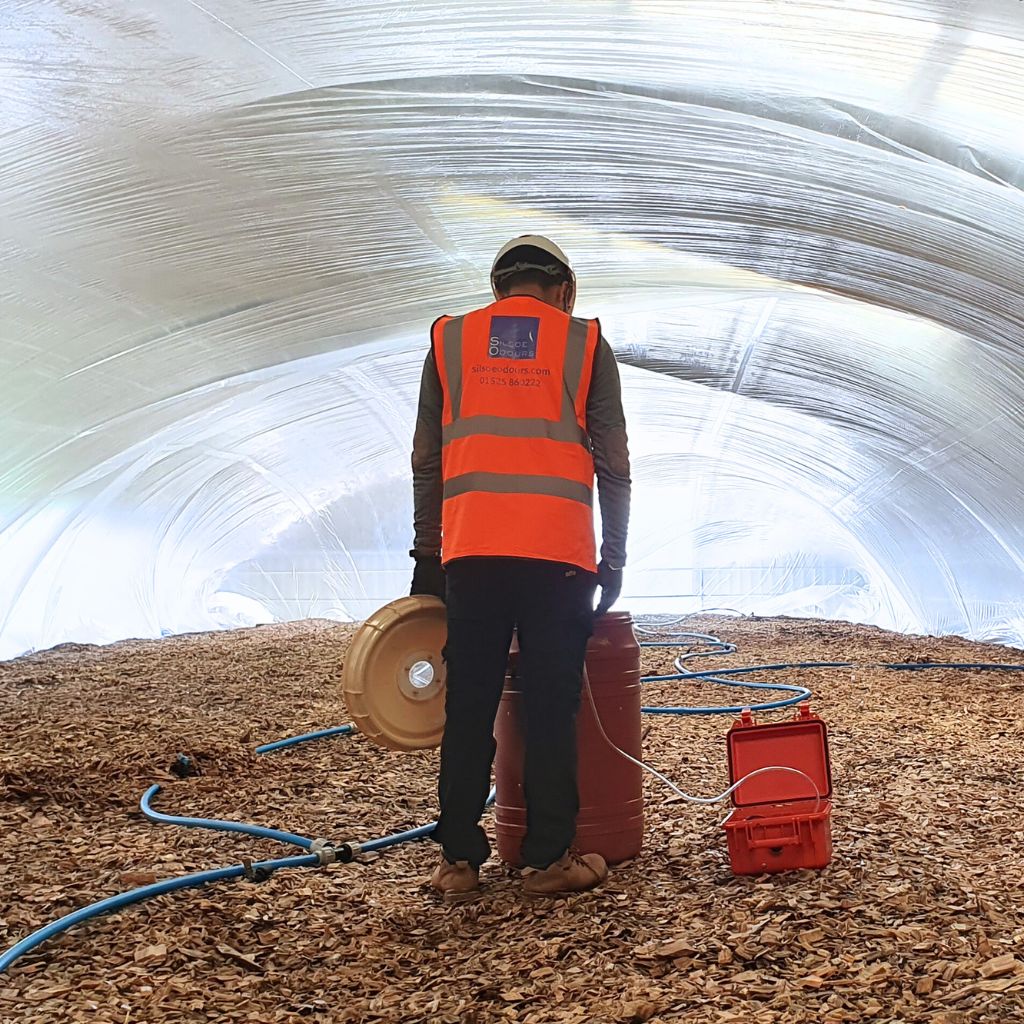HOW SHEET COVER ODOUR SAMPLING IS CRUCIAL FOR BIOFILTER SUCCESS

[vc_row][vc_column][vc_column_text]Many industries have operational processes that create odour. For example, wastewater treatment plants, composting facilities, rendering plants, agriculture and food processing. In all these cases, effective odour control is important for compliance with environmental regulations, and the well-being of the community. A good way to reduce the impact of these odours is to treat them using a biofilter. The purpose of a biofilter is to remove odorous compounds from an air stream. It uses a combination of physical, chemical and biological processes to do so. Once in place, it is important to conduct biofilter odour sampling to check its ongoing effectiveness. [/vc_column_text][vc_separator][/vc_column][/vc_row][vc_row][vc_column][vc_tta_tabs style=”outline” shape=”square” color=”purple” spacing=”10″ active_section=”1″ title=”HOW DOES A BIOFILTER WORK? “][vc_tta_section title=”1″ tab_id=”1686044227438-bb09bb3c-6d8d”][vc_column_text]The biofilter consists of a bed or filter medium, typically composed of organic materials. It provides a suitable environment for the growth of micro-organisms, such as bacteria and fungi.[/vc_column_text][/vc_tta_section][vc_tta_section title=”2″ tab_id=”1686044227513-d41d1c2f-afcb”][vc_column_text]The odorous air stream is introduced to the biofilter through an inlet system. This ensures even distribution across the filter medium.[/vc_column_text][/vc_tta_section][vc_tta_section title=”3″ tab_id=”1686044254675-c1daa1a9-baaa”][vc_column_text]As the odorous air passes through the filter medium, micro-organisms begin to break down the odorous compounds, a process called ‘biological degradation’.[/vc_column_text][/vc_tta_section][vc_tta_section title=”4″ tab_id=”1686044263333-8ce3e6f5-d8fd”][vc_column_text]The operator must maintain the proper levels of moisture by irrigation, and a balanced supply of nutrients to the biofilter. This is to ensure the survival and growth of the micro-organisms.[/vc_column_text][/vc_tta_section][vc_tta_section title=”5″ tab_id=”1686044272158-539d5669-464e”][vc_column_text]The odorous air must spend a specific period of time (about 60 seconds, known as the ‘residence time’) within the biofilter, to maximise the biological degradation process.[/vc_column_text][/vc_tta_section][vc_tta_section title=”6″ tab_id=”1686044281582-52ad7cef-8995″][vc_column_text]At the end of the process, the treated air now has reduced odour concentrations. It is released into the atmosphere directly or through stacks. [/vc_column_text][/vc_tta_section][/vc_tta_tabs][vc_separator][/vc_column][/vc_row][vc_row][vc_column][vc_column_text]
BIOFILTER ODOUR SAMPLING
[/vc_column_text][vc_column_text]Monitoring and maintaining your biofilter is essential. Simply put, it will stop working effectively if you fail to do so. Ensure you maintain appropriate moisture and nutrient levels, and schedule regular replacement or replenishment of the filter medium. You should also regularly conduct odour sampling.
By conducting periodic odour sampling on your biofilter, you can:[/vc_column_text][info_list position=”top” icon_color=”#514f9d” font_size_icon=”24″ connector_color=”#514f9d” connector_animation=”fadeInUp”][info_list_item list_title=”Evaluate the Biofilter’s Performance” list_icon=”Defaults-pencil”]Conducting odour sampling before and after treatment, and at periodic intervals, will give you insights into how well the biofilter is working.[/info_list_item][info_list_item list_title=”Comply with Environmental Regulations” list_icon=”Defaults-check”]You can use odour sampling measurements to check and demonstrate that your facility complies with the odour limits outlined in your operating permit.[/info_list_item][info_list_item list_title=”Identify Issues and Troubleshoot” list_icon=”Defaults-cog gear”]If you have a biofilter in place but odour issues persist, odour sampling can help identify the problem and guide troubleshooting measures.[/info_list_item][/info_list][vc_separator][/vc_column][/vc_row][vc_row][vc_column][vc_column_text]
SHEET COVER ODOUR SAMPLING
[/vc_column_text][vc_column_text]A biofilter requires us to take samples from a large area. As a result, we need to use a specific method, called the ‘Sheet Cover Method’*. This involves covering the biofilter with a thin polymer film (the ‘sheet’), and securing it in such a way that odour emissions cannot leak from the edges. We create a single outlet opening which is large enough to ensure suitable back pressure under the sheet. In this way, we can take odour samples that avoid dilution by wind and weather conditions. Our specialist team at Silsoe Odours holds UKAS accreditation for conducting odour sampling using this method, as outlined in the European Odour Standard EN13725:2022.
*Also known as the ‘Sheet Method’ and the ‘Full Cover Method’.
[/vc_column_text][vc_separator][/vc_column][/vc_row][vc_row][vc_column][vc_column_text]
ODOUR SPECIALISTS
[/vc_column_text][vc_column_text]In conclusion, effective odour control is crucial for industries that generate odours. Biofilters offer an environmentally friendly solution, but you need to maintain them properly to ensure their success. So, why not speak to our specialist team to learn more about the Sheet Cover Method, a proven technique for capturing accurate odour samples from biofilters. In the first instance, you can reach us on 01525 860222 or info@silsoeodours.co.uk. Alternatively, you can follow us on our social channels for more helpful information and updates. Take a look at Silsoe Odours on LinkedIn, Twitter and Facebook.[/vc_column_text][vc_btn title=”Call Silsoe Odours on 01525 860222, or click here to reach us” color=”primary” size=”lg” align=”center” link=”url:https%3A%2F%2Fsilsoeodours.com%2Fcontact-us%2F|||” button_block=”true”][vc_separator][/vc_column][/vc_row]

